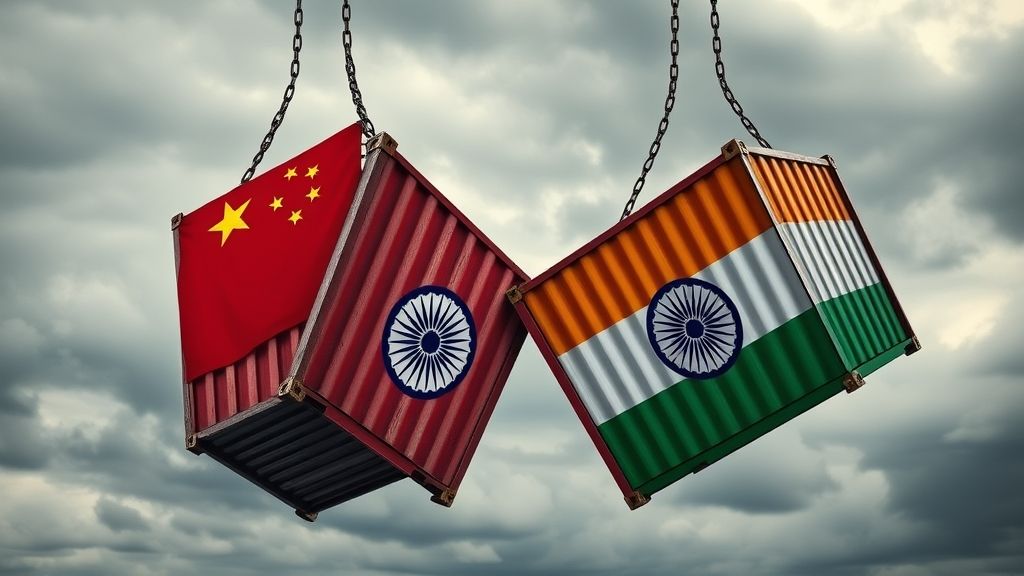Making an important move in safeguarding its domestic chemical industry, China recently declared imposing anti-dumping duty on imports of cypermethrin from India. From immediate effect, such duties will persist for five years, the Ministry of Commerce (MOFCOM) announced Wednesday.
The ruling is the outcome of a full-scale year-long inquiry launched in May 2024, at the instigation of formal complaints from China’s local chemical makers. In accordance with MOFCOM, during the investigation, it was discovered there was strong evidence that Indian exporters had sold cypermethrin—a highly applied agricultural insecticide—well below fair market prices in China. This activity, officials allege, has caused significant harm to local producers.
The levied tariffs, between 48.4% and a high 166.2%, are meant to counter the price benefit generated due to dumping and to reestablish equal competition. The Chinese government highlighted that the probe was carried out strictly following both domestic laws and World Trade Organization (WTO) rules, and that the process was transparent and equal.
Safeguarding Domestic Interests
In the words of He Weiwen, a senior fellow at the Center for China and Globalization, the move is China’s strong stand against unequal trade. “This is not just a defensive move but a clear signal that China is willing to act when the interests of its domestic industries are under threat,” He said in an interview with the Global Times.
Synthetic pyrethroid cypermethrin is utilized to suppress pests in major crops like cotton, vegetables, maize, and fruit trees for agricultural production purposes. With its large farming sector heavily dependent on these chemicals, defending local productive capacity has therefore emerged as an imperative strategic target.
Rising Trade Tensions
Taken amid growing trade tensions between India and China, driven by a boom in protectionism, the measure is Especially against Chinese goods, India has been increasingly assertive in filing trade remedy suits. India launched 47 trade probes in 2024 alone, 37 aimed at Chinese goodsa record high both in case counts and trade value.
Director of the research division at Tsinghua University’s National Strategy Institute, Qian Feng, cautioned that this trend could jeopardize China’s long-term stability. According to Qian, “India’s repeated use of trade defense measures sends a concerning signal and hinders sound bilateral economic cooperation. ”
He said MOFCOM’s recent choice is an alarm call for India, urging its administration to review its progressively unilateral trade policy position.
Context and Global Implications
India’s protectionism is not confined to imports of chemicals. In April, India’s government slapped a 12% temporary tariff, also known as a safeguard duty, on some steel imports to battle a surge of cheap shipments, predominantly from China. The announcement came at a timely moment, with U.S. Vice President JD Vance arriving in New Delhi.
During Vance’s visit, he had senior-level talks with Indian Prime Minister Narendra Modi that were intended to enhance U.S.-India trade ties and discuss possible options to steer clear of punitive American tariffs. Some commentators have speculated that India’s safeguard duty was partly designed to meet U.S. expectations in the wake of continuing negotiations.
But He Weiwen thinks that is a short-sighted approach. “India will not benefit much by putting American alignment ahead of its long-term economic interests in Asia. China has always been India’s leading trading partner, and both countries have vast potential for mutual growth,” he stated.
A Call for Cooperation
Even as tensions mounted, analysts were hopeful of the prospects of restarting positive interaction between the two Asian giants. “China and India not only share geography but vast economic complementarities,” He added. “With nearly 3 billion people combined, their cooperation under schemes like the Belt and Road Initiative could unleash unprecedented growth opportunities.”
Qian sympathized with this perspective, believing that while transient disputes are inevitable in global trade, the overall goal must ever be sustained cooperation. “Since the world’s two biggest developing economies, China and India, have a role to set an example—promoting trade, not hindering it,” he said.
Even if the initial impact of India’s safeguard duty on Chinese exports of steel will have to be limited, its longer-term effect on bilateral trade relations might prove larger if retaliation mounts.
Conclusion
China’s choice to slap anti-dumping fees on Indian cypermethrin shows its determination to shield home-grown industries from unjust foreign rivalry. These steps might ramp up stress in the already tricky China-India trade scene, but they also point out the need to work together more and show mutual respect in global business.
As trade spats pop up more often around the world, moves like these remind countries how crucial it is to stick to worldwide rules, talk in good faith, and aim for long-lasting fair trade ties that help everyone involved.

